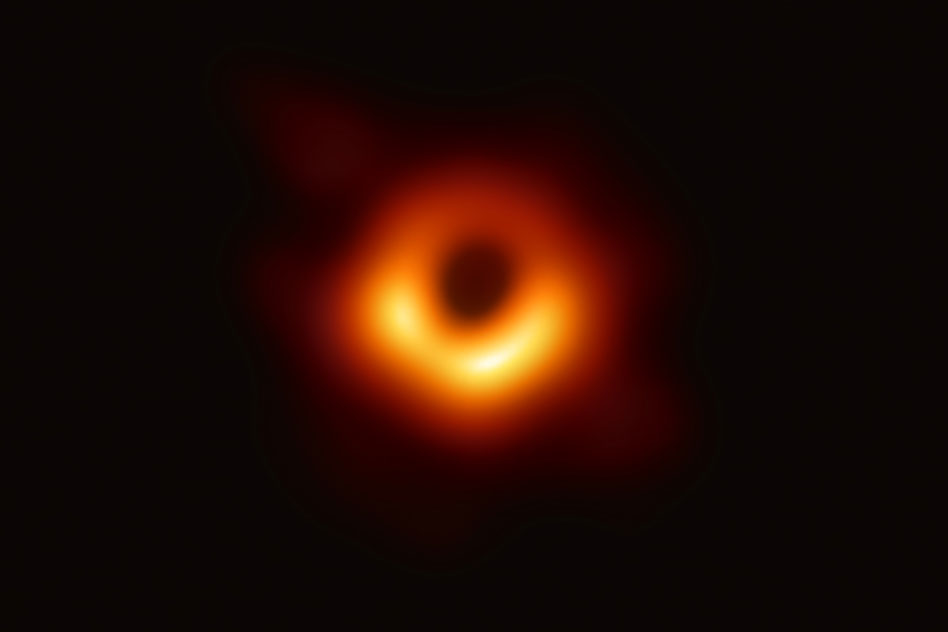The breakthrough in astrophysics that allowed humanity to capture the first-ever image of a black hole also yielded a wealth of invaluable data regarding their dynamic nature. A multinational team of dedicated scientists, led by Dr. Cui Yuzhu from China, meticulously scrutinized 22 years’ worth of observational data acquired from over 20 telescopes positioned strategically across the globe.
Their extensive analysis centered around the colossal black hole residing at the heart of galaxy M87, a cosmic giant dwarfing our sun by a staggering 6.5 billion times in mass. Delving into the trove of observational records, the researchers made a remarkable discovery: a distinctive oscillating jet that gracefully sways up and down in a cyclical pattern precisely every 11 years. This mesmerizing phenomenon serves as unequivocal evidence affirming the spin of the black hole, shedding light on its dynamic nature and furthering our understanding of these enigmatic celestial entities.
Unveiling M87’s Black Hole Jet: Einstein’s Remarkable Predictive Precision
Black holes possess an awe-inspiring gravitational force that pulls in copious amounts of gas and dust from their surroundings. Within this cosmic ballet, a portion of these particles narrowly escapes the clutches of the black hole, shooting out at nearly the speed of light. These energetic outflows manifest as intense beams known as “jets,” extending along a specific axis in space. Remarkably, meticulous observations through advanced telescopes have unveiled a fascinating behavior in the jet of the colossal black hole at the heart of galaxy M87.
What captures the attention of researchers is the apparent oscillation of this jet, a rhythmic swaying back and forth, spanning a range of 10 degrees. This cyclical motion follows an intriguing 11-year cycle, aligning precisely with predictions drawn from Albert Einstein’s remarkable General Theory of Relativity, a cornerstone of modern physics.

The key to understanding this oscillatory behavior lies in a subtle misalignment within the heart of this cosmic giant. The black hole’s axis of rotation, that invisible line around which it whirls, doesn’t perfectly coincide with the axis of its surrounding accretion disk. This disk, a swirling congregation of matter gradually spiraling into the voracious maw of the black hole, embodies a significant part of the story. This inherent misalignment causes a profound perturbation in the fabric of spacetime, a gravitational ripple that reverberates throughout the vicinity, influencing the movement of neighboring celestial objects.
Frame-Dragging and Spacetime Warping in M87
In the realm of physics, this phenomenon is known as “frame-dragging,” where the rotation of a massive body, like a black hole, warps the very space and time surrounding it. It’s akin to a cosmic dance, where the black hole’s spin guides the steps, and the surrounding matter follows, creating a mesmerizing interplay of forces that Einstein’s theory elegantly explains.
The scientific community has been astir with excitement over a recent momentous discovery, one that has the potential to revolutionize our understanding of the intricacies of the cosmos. Going beyond a mere validation of Einstein’s theories, this newfound understanding is poised to usher in a paradigm shift, offering unprecedented insights into the enigmatic tapestry of spacetime.
Yet, amidst the jubilation of this significant breakthrough, a veil of mystery shrouds the heart of our newfound knowledge—the enigmatic M87. While this discovery impeccably aligns with Einstein’s theoretical framework, it poses an array of intriguing questions. Central to these enigmas is an understanding of the dimensions of M87’s accretion disk, a pivotal component in the cosmic drama. Equally captivating is the elusive revelation of the velocity at which the central black hole of M87 is spinning.
The need marks the path to unraveling these cosmic enigmas for sustained and diligent observation, as well as an exhaustive analytical endeavor undertaken by the scientific community. Within this continuum of curiosity-driven exploration, the deeper layers of our universe’s mysteries will be peeled back, allowing us to grasp the profound intricacies that lie at the core of cosmic phenomena.











